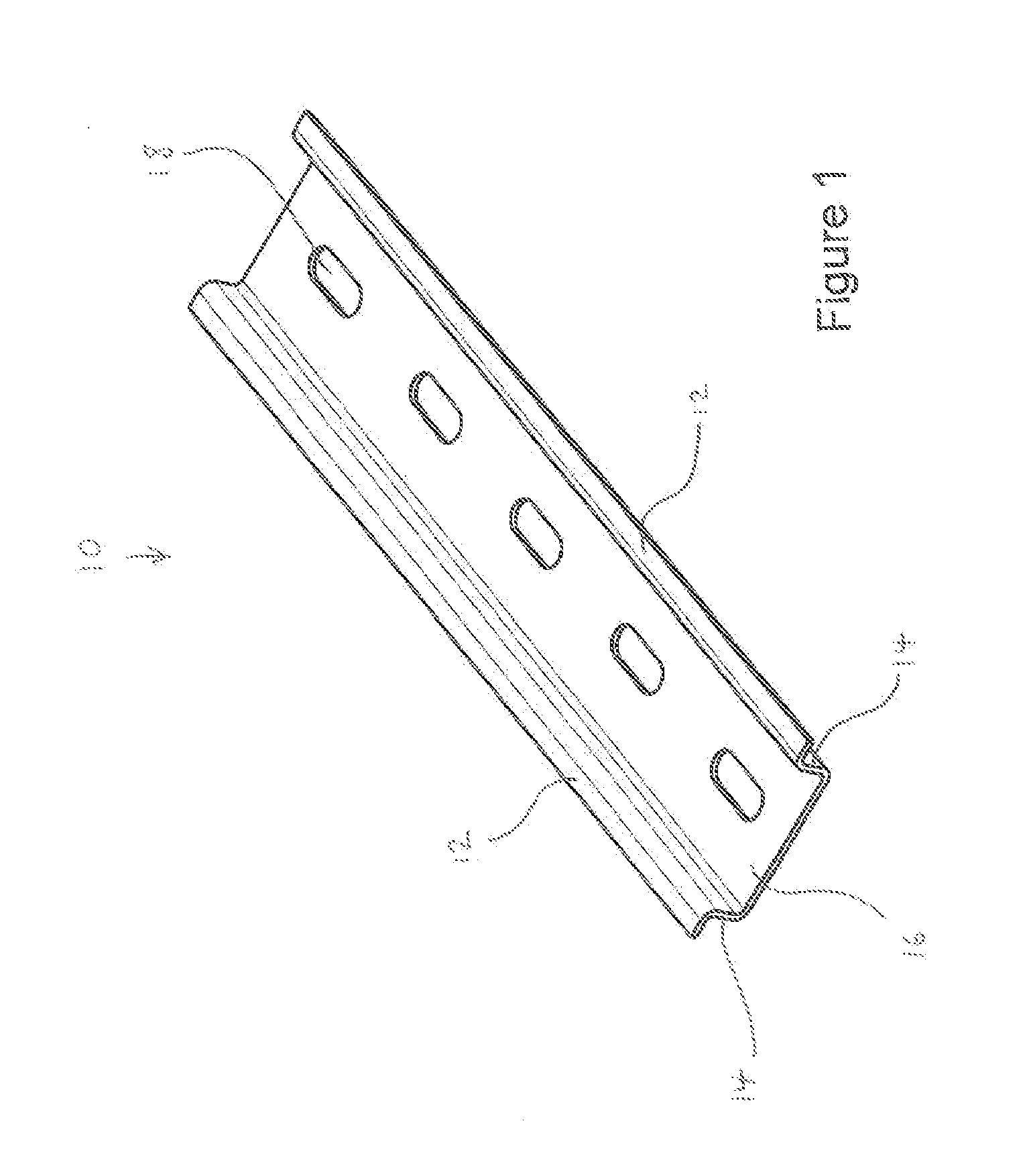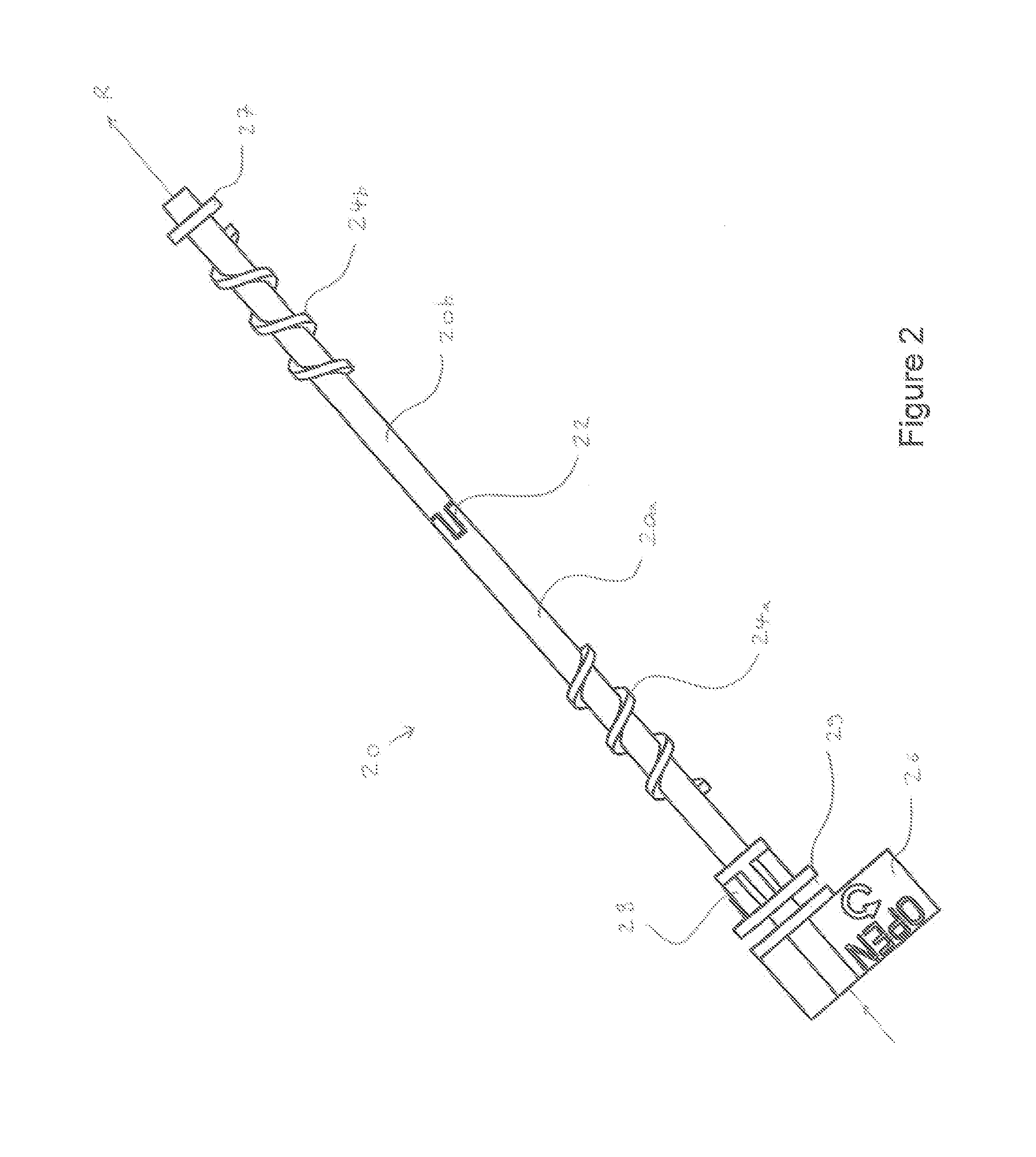Device For Locking To A DIN Rail
a technology of din rail and device, which is applied in the direction of electrical apparatus construction details, applications, show stands, etc., can solve the problems of prone to faults, difficult installation, and overly complicated mechanisms, and achieve the effect of effective engagement of the device with the din rail, convenient attachment of electrical equipment, and easy rotation of the sha
- Summary
- Abstract
- Description
- Claims
- Application Information
AI Technical Summary
Benefits of technology
Problems solved by technology
Method used
Image
Examples
Embodiment Construction
[0051]The present invention seeks to provide an improved device for locking to a DIN rail. Whilst various embodiments of the invention are described below, the invention is not limited to these embodiments, and variations of these embodiments may well fall within the scope of the invention which is to be limited only by the appended claims.
[0052]FIG. 1 shows a typical DIN rail 10. DIN rail 10 has a hat-shaped cross-section characterised by two outwardly protruding flanges 12, joined at right angles to two vertical upright portions 14. Upright portions 14 are connected by top portion 16 with apertures 18 formed therein. Apertures 18 may be used to affix DIN rail 10 to a wall or ceiling, for example. The exact dimensions of DIN rail 10 may vary. In addition, other types of DIN rails with different cross-sections (such as a C-section or a G-section) may be used with the present invention.
[0053]FIG. 2 shows a shaft 20 according to a preferred embodiment of the present invention. Shaft 2...
PUM
 Login to View More
Login to View More Abstract
Description
Claims
Application Information
 Login to View More
Login to View More - R&D
- Intellectual Property
- Life Sciences
- Materials
- Tech Scout
- Unparalleled Data Quality
- Higher Quality Content
- 60% Fewer Hallucinations
Browse by: Latest US Patents, China's latest patents, Technical Efficacy Thesaurus, Application Domain, Technology Topic, Popular Technical Reports.
© 2025 PatSnap. All rights reserved.Legal|Privacy policy|Modern Slavery Act Transparency Statement|Sitemap|About US| Contact US: help@patsnap.com



